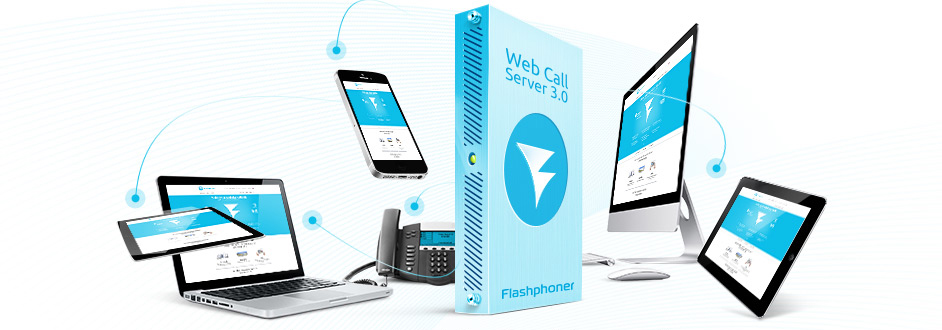REMB stands for Receiver Estimated Maximum Bitrate. This is an RTCP message that uses bandwidth control to prevent network congestion.
Questions and Answers
WebRTC NACK is Negative Acknowledgement. One of the mechanisms for delivery errors correction in WebRTC.
Does iPhone Safari browser support WebRTC technology?
Web Call Server requires a set of ports keep opened and routed properly:
I’m wondering how to setup 2 Click2Call buttons which use different SIP accounts and different callee numbers.
For example:
First button connects to SIP server #1 and calls to number1.
Second button connects to SIP server #2 and calls to number2.
Answer:
You can use dynamic scripts instead of the default scripts account.xml and callee.xml.
For example: account.php and callee.php. It should be your own scripts such as PHP, Rubi, JSP, ASP, CGI or other simple script which returns valid XML output similar with account.xml or callee.xml.
Your dynamic scripts should be set up in config flashphoner.properties. You should replace corresponding settings with account.xml and callee.xml.
Click2Call.js is a main script of client side click-to-call implementation.
The function loginByToken(token) is used for SIP authentication and callByToken(token) is used for calls.
For example, you can implement case when the first button will do loginByToken("button1") and callByToken("callee1")
and loginByToken("button2") and callByToken("callee2").
Example:
Authentication of the click-to-call button:
1. loginByToken("button1")
2. WCS sends a request to your PHP script: account.php?token=button1
3. Your script returns XML for first SIP server account (similar as account.xml).
Call from the click-to-call button:
1. callByToken("callee1")
2. WCS sends a request to your PHP script: callee.php?token=callee1
3. Your script returns XML for the first callee number (similar as callee.xml).
The same is for other click-to-call buttons.
You can get additional information here:
http://docs.flashphoner.com/display/WCS/Click2call
http://docs.flashphoner.com/display/WCS/Click2call+Quick+Start
The client side can be located anywhere either on Linux, Windows or other OS machine because the client-side contains web scripts and files only, such as: Javascript, CSS, images, Flash, HTML etc.
Therefore the client side can be deployed either on Linux server such as apache or nginx or on Windows server using a Microsoft web server product or for example apache for Windows.
For example, if we have a web user on active call, and the user receives an inbound call from a third user.


